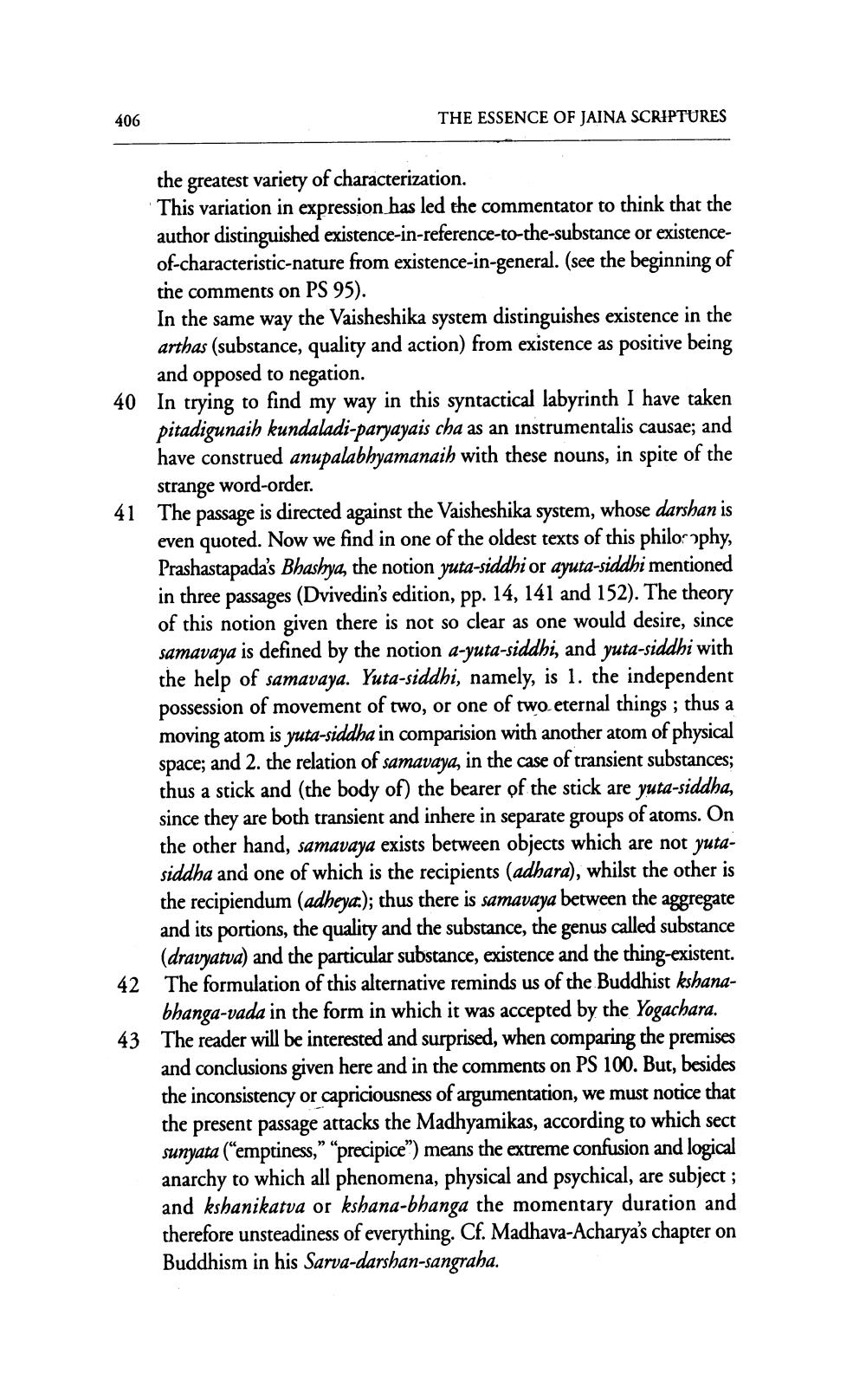________________
406
THE ESSENCE OF JAINA SCRIPTURES
the greatest variety of characterization.
This variation in expression has led the commentator to think that the author distinguished existence-in-reference-to-the-substance or existenceof-characteristic-nature from existence-in-general. (see the beginning of the comments on PS 95).
In the same way the Vaisheshika system distinguishes existence in the arthas (substance, quality and action) from existence as positive being and opposed to negation.
40 In trying to find my way in this syntactical labyrinth I have taken pitadigunaih kundaladi-paryayais cha as an instrumentalis causae; and have construed anupalabhyamanaih with these nouns, in spite of the strange word-order.
41 The passage is directed against the Vaisheshika system, whose darshan is even quoted. Now we find in one of the oldest texts of this philosophy, Prashastapada's Bhashya, the notion yuta-siddhi or ayuta-siddhi mentioned in three passages (Dvivedin's edition, pp. 14, 141 and 152). The theory of this notion given there is not so clear as one would desire, since samavaya is defined by the notion a-yuta-siddhi, and yuta-siddhi with the help of samavaya. Yuta-siddhi, namely, is 1. the independent possession of movement of two, or one of two eternal things; thus a moving atom is yuta-siddha in comparision with another atom of physical space; and 2. the relation of samavaya, in the case of transient substances; thus a stick and (the body of) the bearer of the stick are yuta-siddha, since they are both transient and inhere in separate groups of atoms. On the other hand, samavaya exists between objects which are not yutasiddha and one of which is the recipients (adhara), whilst the other is the recipiendum (adheya.); thus there is samavaya between the aggregate and its portions, the quality and the substance, the genus called substance (dravyatua) and the particular substance, existence and the thing-existent. 42 The formulation of this alternative reminds us of the Buddhist kshanabhanga-vada in the form in which it was accepted by the Yogachara. 43 The reader will be interested and surprised, when comparing the premises and conclusions given here and in the comments on PS 100. But, besides the inconsistency or capriciousness of argumentation, we must notice that the present passage attacks the Madhyamikas, according to which sect sunyata ("emptiness," "precipice") means the extreme confusion and logical anarchy to which all phenomena, physical and psychical, are subject; and kshanikatva or kshana-bhanga the momentary duration and therefore unsteadiness of everything. Cf. Madhava-Acharya's chapter on Buddhism in his Sarva-darshan-sangraha.




